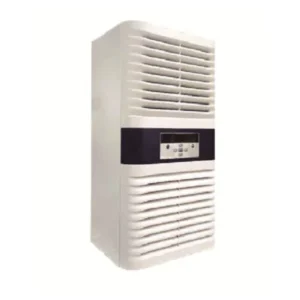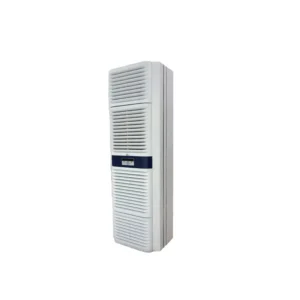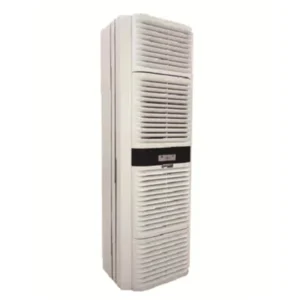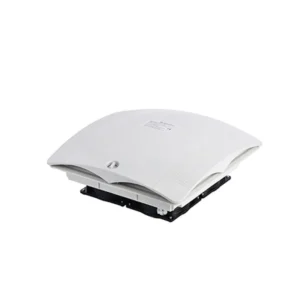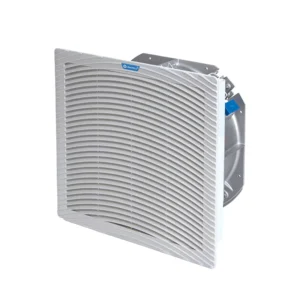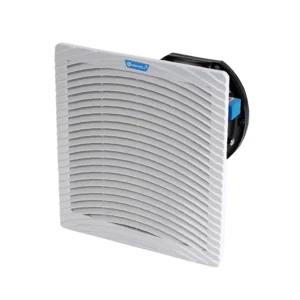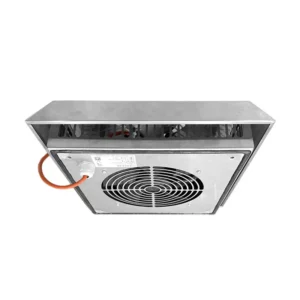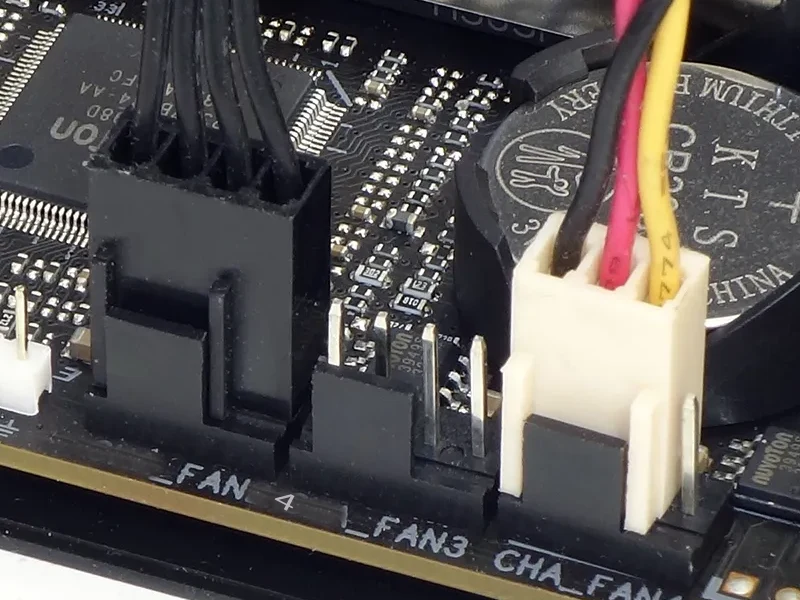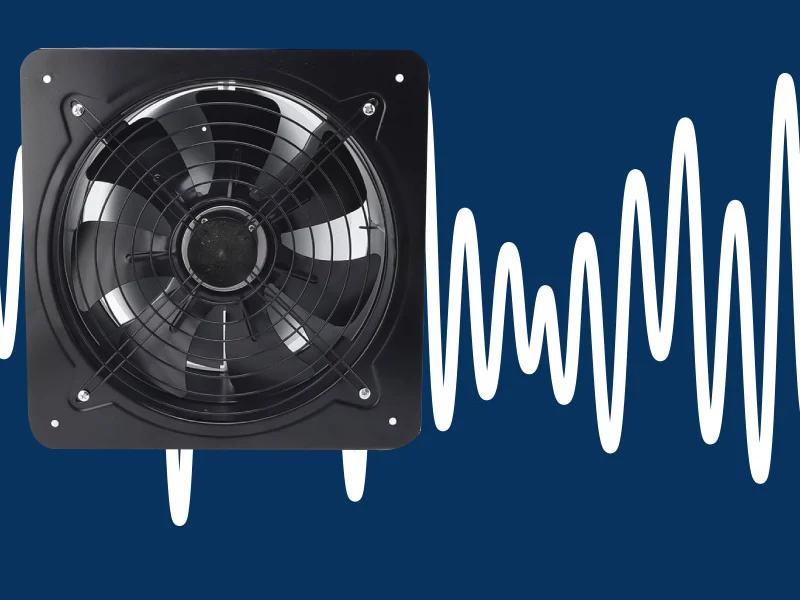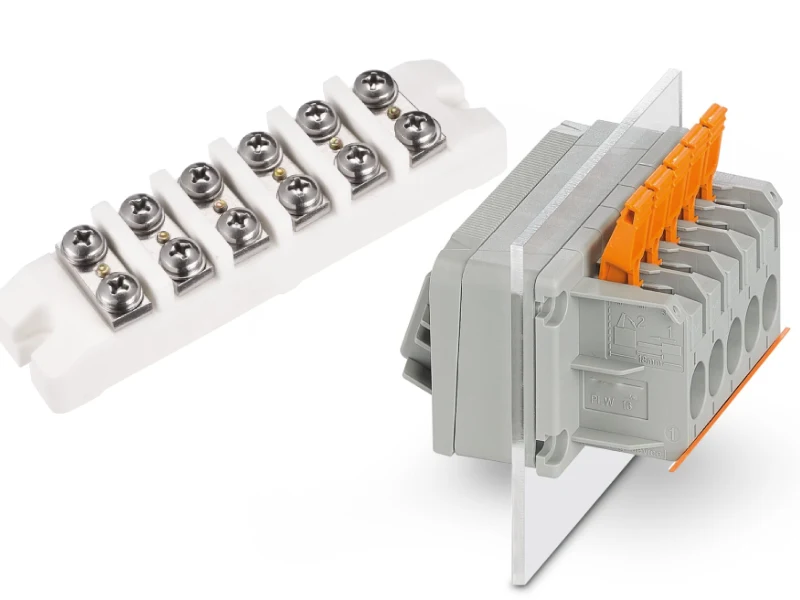You face more choices than ever in climate control for 2025, especially when considering the comparison of cooling and dehumidifying devices. Peltier air coolers and thermoelectric ACs use Peltier technology for spot cooling or compact spaces, while intelligent dehumidifiers specifically target humidity issues. Cabinet air conditioners deliver robust, water-resistant protection for electrical enclosures, making them essential in industrial settings. Matching the right device to your needs—whether for water-sensitive electronics, personal comfort, or humidity management—matters more than ever. Look for smart features, sustainable designs, and energy efficiency. Today’s devices often use water-saving solid-state cooling, AI-driven diagnostics, and sustainable materials. Linkewell stands out as a global leader in cabinet air conditioners, fan filter units, and enclosure heaters, trusted for reliable, sustainable, and innovative climate solutions.
Key Takeaways
- Choose Peltier air coolers or thermoelectric ACs for quiet, efficient cooling in small spaces or personal use without water or refrigerants.
- Cabinet air conditioners offer strong, reliable cooling and water protection for industrial equipment, with smart controls and energy-saving features.
- Intelligent dehumidifiers excel at controlling humidity, protecting electronics and interiors, and often include smart apps and sensors for easy use.
- Fan filter units and enclosure heaters support equipment safety by managing airflow, dust, and condensation in sensitive or harsh environments.
- Look for devices with smart features and energy certifications to save power, reduce costs, and support sustainable, climate-friendly cooling.
Comparison of Cooling and Dehumidifying Devices
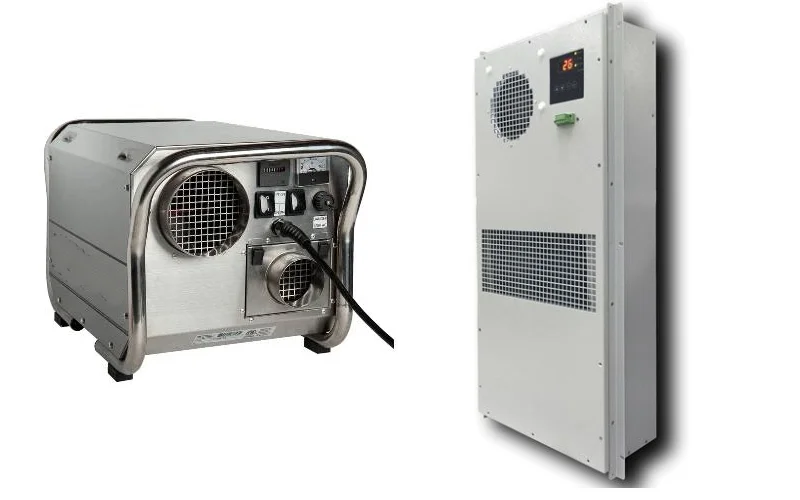
Key Differences
When you look at the comparison of cooling and dehumidifying devices in 2025, you see a wide range of options. Each device uses different technology, which affects its performance, efficiency, and best use. Here’s a quick table to help you see how they stack up:
| Device Type | Main Technical Feature | Cooling/Dehumidifying Capacity | Energy Efficiency | Noise Level | Smart Features | Typical Use Case |
|---|---|---|---|---|---|---|
| Peltier Air Cooler | Uses Peltier effect, no moving parts, no refrigerants | Low (personal/small space cooling) | Moderate | Very low (almost silent) | Usually no | Small spaces, personal use |
| Thermoelectric AC | Peltier effect, higher power, no refrigerants | Medium (small rooms, vehicles) | Moderate | Low (soft fan hum) | Sometimes app control | Small rooms, vehicles |
| Cabinet Air Conditioner | Refrigeration cycle, compressor, refrigerants | High (industrial enclosures) | High | Low to moderate | No | Industrial equipment rooms |
| Intelligent Dehumidifier | Moisture removal, Peltier or compressor models | N/A (humidity control) | High | Low to moderate | Yes (app, sensors, voice) | Homes, offices, bedrooms |
| Fan Filter Unit | Ventilation, dust and water filtering | Low (ventilation, not direct cooling) | High | Very low | No | Electrical panels, enclosures |
| Enclosure Heater | Prevents condensation, maintains temperature | N/A (heating, not cooling) | High | Very low | Yes (thermostat) | Industrial cabinets, outdoor boxes |
You can see that peltier air coolers and thermoelectric ACs both use the peltier effect, but thermoelectric ACs offer more cooling power. Cabinet air conditioners use a traditional refrigeration cycle with refrigerants and compressors, which gives them the highest cooling capacity. Intelligent dehumidifiers focus on removing water from the air, using either peltier or compressor technology, and often come with smart features for easy control.
If you want to compare performance and efficiency, cabinet air conditioners stand out in industrial settings. They deliver strong cooling for large enclosures and protect sensitive electronics from heat and water. Intelligent dehumidifiers shine in spaces where water control is just as important as temperature. Peltier air coolers and thermoelectric ACs work best for personal comfort or small spaces, offering quiet operation and moderate efficiency.
Tip: If you need to protect expensive equipment from both heat and water, cabinet air conditioners and intelligent dehumidifiers are your best bet. For personal comfort or small rooms, peltier and thermoelectric options keep things cool and quiet.
Best Use Cases
Choosing the right device depends on your needs. Here’s a table to help you match each technology to its ideal scenario:
| Cooling Technology | Best Use Cases | Key Considerations |
|---|---|---|
| Peltier Air Coolers | Small enclosures, silent operation, compact spaces | Great for low power, noise-sensitive environments |
| Thermoelectric ACs | Compact and quiet cooling for small rooms, vehicles | Efficient for small-scale cooling, no moving parts |
| Cabinet Air Conditioners | Large industrial enclosures, robust cooling, humidity control | Best for heavy-duty cooling and water management |
| Intelligent Dehumidifiers | Spaces needing moisture control as well as temperature regulation | Protects electronics and interiors from water damage |
| Fan Filter Units | Electrical panels, control cabinets needing airflow and dust control | Easy to install, low noise, energy efficient |
| Enclosure Heaters | Preventing condensation and freezing in cabinets | Keeps electronics safe from water and cold |
Let’s break it down even more:
- If you want to cool a small office, bedroom, or your personal workspace, peltier air coolers and thermoelectric ACs are perfect. They use the peltier effect to move heat without any water or refrigerants, so you get quiet, efficient cooling.
- For industrial environments, you need something tougher. Cabinet air conditioners from Linkewell use advanced refrigeration technology. They keep water, dust, and heat away from your sensitive equipment. These units offer high efficiency and strong performance, even in harsh conditions.
- If humidity is your main concern, intelligent dehumidifiers are the answer. These dehumidifiers remove water from the air, protecting electronics, furniture, and even your health. Many intelligent dehumidifiers now come with app controls, sensors, and voice commands, making them easy to use.
- Fan filter units and enclosure heaters play a supporting role. Fan filter units keep air moving and filter out dust and water, which helps with cooling and equipment longevity. Enclosure heaters prevent condensation and freezing, which is key for outdoor or cold environments.
Note: In 2025, you have more smart options than ever. Intelligent dehumidifiers and cabinet air conditioners now offer digital controls, remote monitoring, and energy-saving features. This means you can keep your equipment safe from water and heat, while also saving on energy costs.
When you compare the cooling and dehumidifying devices available, you see that each one has a clear role. Peltier and thermoelectric devices are best for personal and small-scale cooling. Cabinet air conditioners dominate in industrial settings, where water and heat can cause serious problems. Intelligent dehumidifiers are essential for any space where water control matters as much as temperature.
Peltier Air Coolers
How It Works
Peltier air coolers use a fascinating scientific principle called the Peltier effect. When you run a direct current through a special circuit made of two different semiconductors, heat moves from one side to the other. This means one side gets cold while the other side gets hot. The cooler side absorbs heat from the air inside your space, and the hot side releases it outside. You often see a fan and heat sink attached to help move the heat away. Because peltier air coolers have no moving parts inside the peltier module, they work quietly and don’t need refrigerants or water. This makes them a great choice for cooling small areas where you want precise temperature control and don’t want to worry about water leaks or noisy operation.
Pros
- Peltier air coolers are compact and lightweight, so you can fit them almost anywhere.
- They switch between heating and cooling just by changing the direction of the current.
- You get fast temperature response and precise control, which is perfect for sensitive electronics.
- These coolers run quietly, with almost no vibration, making them ideal for bedrooms or offices.
- Peltier air coolers are environmentally friendly. They don’t use refrigerants or water, so you avoid greenhouse gases and water waste.
- You can use them in mini-fridges, wearable coolers, and even in small gadgets that need cooling.
Tip: If you want a cooler that’s easy to install and doesn’t need water or chemicals, peltier air coolers are a smart pick.
Cons
- Peltier air coolers work best in a limited temperature range, usually between -20°C and +70°C.
- They use more energy than compressor coolers, especially if you need a lot of cooling.
- The heat sinks and fans needed for cooling can add weight and size to the cooler.
- If you need to cool a large area or need very low temperatures, a compressor system might be better.
- Sometimes, the fans used to move heat can make a little noise, even though the peltier module itself is silent.
Use Cases
| Industry Sector | Common Applications of Peltier Air Coolers in 2025 |
|---|---|
| Consumer Electronics | Cooling for CPUs, GPUs, laptops, and gaming consoles to prevent overheating and water damage. |
| Medical Devices | Keeping portable blood analyzers, PCR devices, and medicine storage units at the right temperature without water. |
| Automotive Industry | Climate-controlled seats, cup holders, and battery cooling in electric vehicles, all without water. |
| Food and Beverage Industry | Mini-refrigerators, wine coolers, and portable beverage coolers that don’t need water or refrigerants. |
| Telecommunications | Cooling for sensitive telecom equipment, keeping water and heat away from vital systems. |
| Wearable Technology | Personal cooling devices and smart clothing that keep you comfortable without water or bulky parts. |
You’ll find peltier air coolers in many places where water and noise are a concern. They shine in small, personal spaces and in devices where you need reliable, quiet cooling. If you want a cooler that’s easy to use, doesn’t need water, and keeps your electronics safe, peltier air coolers are a great solution.
Thermoelectric ACs
How It Works
Thermoelectric ACs use a unique solid-state technology for cooling. You get a system that relies on the Peltier effect, where a DC current moves heat from one side of a thermoelectric module to the other. This means one side gets cold, and the other side gets hot. Fans and heat sinks help move the air, but you won’t find any compressors or refrigerants like in traditional systems. Instead, thermoelectric ACs use electrical current as the main driver for cooling. You can mount these units in any direction, making them perfect for mobile setups or harsh environments where water or dust might be a problem. The only moving parts are the fans, so you get a cooler that is almost silent and needs very little maintenance.
Pros
Thermoelectric ACs bring a lot of benefits to the table:
- You get precise temperature control, often within just a degree or two.
- The solid-state design means fewer moving parts, so your cooler lasts longer and rarely breaks down.
- Thermoelectric ACs don’t use water or refrigerants, making them eco-friendly and safe for sensitive spaces.
- They work well in high-temperature environments, even when traditional ACs might fail.
- You can recover waste heat, which boosts energy efficiency and helps you save on power bills.
- Maintenance is simple—just keep the fans clean and you’re good to go.
Tip: If you want a cooling solution that’s quiet, reliable, and doesn’t need water or chemicals, thermoelectric ACs are a smart choice.
Cons
Thermoelectric ACs do have some drawbacks:
- The cooling capacity is lower than what you get from compressor-based systems, so they’re best for small rooms or equipment.
- Thermoelectric materials can be expensive and hard to make, which can drive up the price of your cooler.
- Scaling up for large industrial cooling is tough because of low conversion efficiency and material limits.
- Some raw materials used in thermoelectric modules are rare or toxic, which can affect cost and sustainability.
- Printable thermoelectric tech is still not ready for big projects due to low efficiency and tricky manufacturing.
Use Cases
You’ll find thermoelectric ACs in places where you need reliable cooling but can’t use water or bulky systems. Here are some common uses:
| Application Area | How Thermoelectric ACs Are Used for Cooling and Water Protection |
|---|---|
| Telecom Cabinets | Keeps electronics cool and dry, even in dusty or wet environments |
| Medical Equipment | Maintains precise temperatures for sensitive devices without water |
| Vehicles & Mobile Labs | Offers cooling where water leaks or compressor noise are a concern |
| Small Server Rooms | Provides backup cooling for critical systems, no water needed |
| Portable Coolers | Delivers spot cooling for drinks or food, safe from water spills |
Thermoelectric ACs shine when you need a cooler that’s quiet, efficient, and doesn’t rely on water or traditional refrigerants. You get peace of mind with less maintenance and more flexibility in how you use your cooling system.
Cabinet Air Conditioners

Recommended products
How It Works
Cabinet air conditioners use advanced refrigeration technology to keep your electrical enclosures cool and dry. You get a system that pulls heat out of the cabinet using a closed-loop refrigeration cycle. This cycle uses a compressor, condenser, and evaporator to move heat from inside the cabinet to the outside air. The cooler air stays inside, while the hot air and water vapor get pushed out. Linkewell’s cabinet air conditioners use inverter technology and EC fans to boost energy efficiency. You can rely on smart digital controls and programmable thermostats for precise temperature management. With IP54/IP65 and NEMA 4 protection, these units keep water, dust, and heat away from your sensitive equipment—even in harsh industrial settings.
Pros
You’ll find a lot to like about Linkewell’s cabinet air conditioners:
- High energy efficiency thanks to inverter compressors and EC fans.
- Advanced digital controls and remote monitoring for easy operation.
- IP54/IP65 and NEMA 4 ratings protect against water and dust.
- Unique condenser management system evaporates condensed water inside, so you never worry about leaks.
- Industrial-grade centrifugal fans improve cooling and prevent air short-circuits.
- Compact, ultra-thin design makes installation and maintenance simple.
- Wide range of mounting options—top, side, or wall—to fit any enclosure.
- Microcomputer temperature controller gives you precise control.
- Customizable cooling capacities from 350W to 3500W.
- Compliance with UL, CE, RoHS, and ISO 9001 certifications for global reliability.
Tip: You can trust Linkewell’s cabinet air conditioners to keep your equipment safe, cool, and dry, even when water, dust, or heat threaten your operations.
Use Cases
Cabinet air conditioners play a key role in many industries. Here’s a quick look at where you’ll see them in action:
| Industry | Application Focus | Benefit Achieved |
|---|---|---|
| Food & Beverage | Humidity management | Keeps products safe and fresh |
| Pharmaceuticals | Process consistency | Maintains strict climate control |
| Manufacturing | Temperature control | Reduces defects, steady output |
| Digital Printing | Air quality, precision | Consistent, high-quality results |
| Data Centers | Precision cooling | Protects servers, saves energy |
You’ll also find these coolers in wind power, energy storage, and telecom. They help you manage water, heat, and dust, so your equipment runs longer and safer. Linkewell’s global reputation and certifications mean you get reliable, efficient cooling wherever you are. Trusted by ABB, Siemens, and Schneider, Linkewell delivers cabinet air conditioners that meet the highest standards for safety and performance.
Fan Filter Units
How It Works
You might wonder how fan filter units actually deliver reliable cooling for your enclosures. These units combine a fan and a filter in one compact device. The fan pulls air through the filter, removing dust and particles before the air enters your electrical cabinet. This process keeps the inside clean and helps with cooling by moving fresh air across your equipment. Some models even use HEPA filters to supply purified air, which is great for sensitive environments. You can control each unit individually or group them together for larger setups. Internal baffles help spread the airflow evenly, so every part of your enclosure gets the same cooling effect. If you need to keep out water or dust, you can choose models with special ratings for harsh conditions. Keeping the filter clean is important because it helps your cooler work at its best.
- Fan filter units create positive pressure inside enclosures, reducing contamination risks.
- You can find options with airflow detectors or reverse airflow for extra protection.
- The right fan filter unit depends on your cooling needs, airflow requirements, and available space.
Pros
Linkewell’s fan filter units make your life easier in several ways. Installation is a breeze thanks to their modular design and clear instructions. You just use the provided template, secure the unit, connect power, and you’re set. Quick filter replacement means less downtime for your cooler. These units operate quietly, often below 60 decibels, so you can use them in offices, labs, or anywhere noise matters. Advanced fan technology boosts energy efficiency, with some models using as little as 0.35 watts per cubic foot per minute. That’s lower than most industry standards, so you save on energy bills while keeping your equipment cool.
| Benefit Aspect | What You Get with Linkewell Fan Filter Units |
|---|---|
| Installation | Tool-free assembly, easy expansion, and fast filter changes |
| Noise | Quiet operation, suitable for sensitive or shared spaces |
| Energy Efficiency | Lower power consumption, helps reduce your overall energy costs |
Tip: If you want a cooler that’s easy to install, quiet, and saves energy, fan filter units are a smart choice.
Use Cases
You’ll see fan filter units in all kinds of places where cooling and clean air matter. Hospitals use them in pharmacies and compounding areas to keep medicine safe. Microelectronics and semiconductor factories rely on these coolers to protect delicate parts from dust and overheating. Laboratories and cleanrooms need constant airflow and cooling to meet strict cleanliness standards. You can also use fan filter units in retrofit projects to add extra cooling power or in new builds where space is tight. They work well in laminar flow cabinets, enclosed workspaces, and any area that needs a microenvironment with clean, cool air.
- Hospital pharmacies and labs
- Semiconductor and microelectronics manufacturing
- Cleanrooms and medical facilities
- Retrofit and new construction projects needing extra cooling
- Laminar flow cabinets and enclosed workstations
Fan filter units give you a flexible, reliable way to keep your equipment cool and your air clean. With Linkewell, you get a cooler that’s easy to use, energy efficient, and built for today’s demanding environments.
Enclosure Heaters
How It Works
Enclosure heaters keep your electrical cabinets safe from condensation and freezing. They work by raising the temperature inside the enclosure at least 9°F (5°C) above the outside air. This small difference stops moisture from forming on your equipment. The heater uses radiant heat, which the metal parts inside absorb quickly. Most models have built-in thermostats. These turn the heater on when it gets cold and off when it’s warm enough, so you save power. By keeping the temperature steady, the heater also keeps humidity low. This helps prevent corrosion and electrical failures. You get a simple, reliable solution with no moving parts. You can mount these heaters in almost any position, making them easy to fit into your setup.
- Keeps the inside of your enclosure warmer than the outside to stop condensation.
- Maintains stable humidity and temperature, protecting sensitive electronics.
- Built-in thermostat controls save energy by running only when needed.
- Prevents freezing and moisture buildup, reducing the risk of costly repairs.
Tip: If you want to avoid downtime and protect your equipment from water damage, an enclosure heater is a smart choice.
Pros
Linkewell’s enclosure heaters stand out for their robust design and energy efficiency. You get a compact heater that fits easily into standard enclosures. The durable aluminum or stainless steel housing resists corrosion, so your heater lasts longer, even in harsh environments. Linkewell tests every heater for quality and safety, meeting international standards like CE and UL. The heaters use PTC technology, which means they self-regulate their heat output. This feature, along with the thermostat, helps you save energy and extend the life of your heater. You only use power when you need it, so you keep your costs down without losing performance.
- Compact, DIN-mountable design for easy installation.
- Corrosion-resistant materials for tough environments.
- Self-regulating PTC technology for better energy efficiency.
- Thermostat control for precise temperature management.
- Certified for safety and reliability worldwide.
Use Cases
You’ll find enclosure heaters in many places in 2025. They protect sensitive electronics in factories, automotive plants, and oil & gas sites. Offices and telecom companies use them to keep server rooms and control panels dry. More homes now use smart enclosure heaters for HVAC systems. You also see them in labs, hospitals, and transportation systems, where stable temperatures are critical.
- Industrial automation and electronics manufacturing
- Automotive and aerospace control panels
- Oil & gas and energy sector enclosures
- Commercial buildings and telecom infrastructure
- Residential smart home and HVAC systems
- Laboratories, healthcare, and transportation
Note: The demand for smart, reliable, and energy-efficient enclosure heaters keeps growing, especially in fast-developing regions and industries using advanced robotics and AI.
Performance and Efficiency
Device Performance
When you compare cooling and dehumidifying devices in 2025, you see big differences in performance. Each device type brings unique strengths to the table. Let’s break down how they stack up:
- Peltier air coolers give you targeted cooling for small spaces. They work best for personal use or electronics. Their performance shines in quiet, compact environments, but they can’t handle large rooms.
- Thermoelectric ACs step up the cooling power. You get more consistent temperature control for small rooms, vehicles, or sensitive equipment. These units offer solid performance improvements over basic Peltier coolers, especially in places where you can’t use water or traditional refrigeration.
- Cabinet air conditioners deliver the highest cooling performance for industrial enclosures. Linkewell’s models use advanced refrigeration cycles with compressors and EC fans. You get strong, reliable cooling that protects your equipment from heat, dust, and water. These units keep your control cabinets at the perfect temperature, even in harsh outdoor or factory settings. Their performance improvements come from inverter technology, digital controls, and smart sensors that adjust cooling based on real-time needs.
- Intelligent dehumidifiers focus on removing moisture. Modern models, especially those with ENERGY STAR certification, combine high dehumidification capacity with quiet operation. You get fast water removal and steady humidity control, which means better performance for homes and offices. Consumer Reports notes that the best dehumidifiers in 2025 dry rooms quickly and quietly, so you don’t have to worry about rising energy bills.
- Fan filter units offer steady airflow and basic cooling for electrical panels. They don’t provide deep refrigeration, but they keep dust and heat away from sensitive parts. Their performance is best in environments where you need clean air and moderate cooling.
- Enclosure heaters don’t cool, but they keep cabinets warm and dry. You get reliable protection from condensation and freezing, which means better performance for your electronics in cold or damp places.
Here’s a quick table to help you compare device performance:
| Device Type | Cooling/Dehumidifying Capacity | Best For | Performance Improvements in 2025 |
|---|---|---|---|
| Peltier Air Cooler | Low (spot cooling) | Personal, electronics | Quieter fans, better heat sinks |
| Thermoelectric AC | Medium (small rooms) | Vehicles, labs, telecom | Improved modules, smarter controls |
| Cabinet Air Conditioner | High (industrial enclosures) | Factories, outdoor cabinets | Inverter tech, digital sensors, EC fans |
| Intelligent Dehumidifier | High (humidity control) | Homes, offices | ENERGY STAR, faster drying, quieter |
| Fan Filter Unit | Low (ventilation) | Panels, automation | Higher airflow, better filters |
| Enclosure Heater | N/A (heating only) | Cold/damp environments | PTC tech, precise thermostats |
If you need top-tier cooling performance for industrial equipment, cabinet air conditioners from Linkewell stand out. For humidity control, intelligent dehumidifiers with ENERGY STAR ratings deliver fast, efficient results.
Energy Efficiency
Efficiency matters more than ever in 2025. You want devices that save power and lower your costs. Let’s see how each device type handles energy efficiency:
- Peltier air coolers use solid-state technology. They don’t need refrigerants or water, which makes them simple and reliable. However, their efficiency drops when you try to cool larger spaces. You get the best results in small, targeted areas.
- Thermoelectric ACs improve on this with smarter controls and better heat transfer. They use less energy than older models, especially when you only need moderate cooling. Their efficiency makes them a good choice for vehicles or mobile labs.
- Cabinet air conditioners from Linkewell lead the way in energy efficiency for industrial cooling. These units use inverter compressors and EC fans, which adjust speed and power based on real-time cooling needs. You get strong cooling with less wasted energy. Digital thermostats and modbus-ready controllers help you fine-tune performance, so you only use as much power as you need. Linkewell’s focus on efficiency means you save money and protect your equipment at the same time.
- Intelligent dehumidifiers have made huge strides in energy efficiency. ENERGY STAR certified models use advanced sensors and anti-frost technology to remove more water per kilowatt-hour. You get high IEF (integrated energy factor) ratings, which means better efficiency and lower electricity bills. Features like continuous drainage and smart pumps make these units easy to use and maintain.
- Fan filter units keep energy use low. Linkewell’s models use efficient motors and easy-to-replace filters. You get steady airflow and cooling without high power draw. These units are perfect for panels and automation systems where you want reliable performance and efficiency.
- Enclosure heaters use PTC (positive temperature coefficient) technology. This means they self-regulate and only use power when needed. Built-in thermostats help you save even more energy by turning the heater off when the temperature is right.
Here’s a table showing energy efficiency highlights:
| Device Type | Energy Efficiency Features | Typical Power Use | Certifications/Tech |
|---|---|---|---|
| Peltier Air Cooler | No refrigerants, low standby power | Low (small spaces) | Solid-state, compact fans |
| Thermoelectric AC | Smart controls, no water/refrigerants | Moderate | Advanced modules |
| Cabinet Air Conditioner | Inverter compressors, EC fans, smart sensors | High (industrial) | UL, CE, RoHS, ISO 9001 |
| Intelligent Dehumidifier | ENERGY STAR, anti-frost, smart drainage | Moderate to high | High IEF, ENERGY STAR |
| Fan Filter Unit | Efficient motors, easy filter replacement | Very low | CE, RoHS, ISO |
| Enclosure Heater | PTC tech, thermostat control | Low to moderate | CE, UL, RoHS |
Tip: Always look for devices with smart controls and certifications like ENERGY STAR, UL, or CE. These features show you’re getting the best efficiency and performance for your money.
You can see that performance and efficiency go hand in hand. The right device gives you the cooling or dehumidifying power you need without wasting energy. Linkewell’s cabinet air conditioners and fan filter units stand out for their advanced energy-saving technologies. Intelligent dehumidifiers with ENERGY STAR ratings also lead the way in home and office efficiency. When you choose the right device, you get better performance, lower costs, and a more sustainable solution for your cooling and humidity needs.
Cost, Noise, and Maintenance
Price Ranges
When you start comparing Peltier air coolers, thermoelectric ACs, cabinet air conditioners, and intelligent dehumidifiers, you probably want to know about the cost. Here’s a quick look at what you might pay for each device in 2025:
| Product Type | Cooling Technology | Price Range (USD) | Notes |
|---|---|---|---|
| Peltier Air Coolers | Thermoelectric Peltier | $99 – $139 | Compact, personal use, moderate cost, runs on ice packs, 2-3 hours runtime |
| Thermoelectric ACs | Evaporative misting & pad | $79 – $129 | Low power, longer runtime, affordable cost, 3 fan speeds |
| Cabinet Air Conditioners | Advanced refrigeration | Custom/Quote | Industrial-grade, higher cost, tailored to enclosure size and features |
| Intelligent Dehumidifiers | Smart/compressor/Peltier | Custom/Quote | Cost varies by capacity, smart features, and energy efficiency |
You’ll notice that Peltier air coolers and thermoelectric ACs have a lower upfront cost. Cabinet air conditioners and intelligent dehumidifiers usually require a custom quote. The cost for these depends on your enclosure size, cooling needs, and smart options. If you want the best protection for your equipment, investing in a cabinet air conditioner can save you from expensive repairs later.
Noise Levels
Noise can make a big difference in your workspace. Peltier air coolers and thermoelectric ACs run quietly, so you can use them in bedrooms or offices without distraction. Cabinet air conditioners from Linkewell use advanced fans and compressors. You get low to moderate noise, but the design keeps sound levels down, even in industrial settings. Intelligent dehumidifiers also stay quiet, especially the latest models with smart controls. If you need a silent environment, you’ll find plenty of options.
Tip: Always check the decibel rating if noise is a concern for you.
Maintenance Needs
Maintenance affects the total cost of ownership. Peltier air coolers and thermoelectric ACs need simple care—just clean the fans and replace filters. Cabinet air conditioners require a bit more attention. You should check filters, clean coils, and inspect seals to keep performance high. Linkewell makes this easy with accessible panels and smart alerts. Intelligent dehumidifiers need regular water tank cleaning and filter changes. If you keep up with maintenance, you’ll avoid extra cost and extend the life of your device.
Regular maintenance helps you save on long-term cost and keeps your cooling system running smoothly.
Environmental Impact and Sustainability
Eco-Friendly Features
You probably care about how your cooling choices affect the planet. In 2025, you see a big shift toward sustainable technology in refrigeration and climate-friendly cooling. Manufacturers now use stainless steel for durability and hygiene, which means products last longer and create less waste. Some devices use biodegradable plastics, so you help reduce environmental impact when you choose them. You also find evaporative technology in many new models. This method uses natural processes to lower energy use, making your cooling solution more sustainable.
Smart technology plays a big role, too. It helps you optimize energy use and improve indoor air quality. You get better control, less waste, and more comfort. Researchers have even created new refrigeration devices using nickel-titanium alloys. These systems avoid traditional refrigerants, which often harm the environment. Instead, they use greenhouse gas-free, fully recyclable materials. This innovation boosts efficiency and supports global decarbonization. You see how sustainable design and renewable energy work together to make cooling more climate-friendly.
Certifications and Materials
When you look for sustainable products, certifications matter. Linkewell leads the way with cabinet air conditioners that meet UL, CE, RoHS, and ISO 9001 standards. These certifications show you get safe, reliable, and sustainable refrigeration for your industrial needs. Linkewell uses corrosion-resistant materials and advanced inverter compressors. These features help you save energy and extend product life. You also benefit from smart digital controls, which let you fine-tune performance and reduce waste.
Linkewell’s commitment to sustainability practices means you get products designed for recyclability and energy efficiency. The company uses sustainable materials and supports renewable energy in its manufacturing. You can trust that every cabinet air conditioner, fan filter unit, and enclosure heater from Linkewell supports your sustainability goals. By choosing these solutions, you help create a more sustainable future for your business and the environment.
Want to make a real difference? Choose climate-friendly cooling and sustainable refrigeration for your next project. You’ll see lower costs, better performance, and a cleaner planet.
Choosing the Right Device
For Personal and Small Spaces
You want a simple solution for your desk, bedroom, or small office. Peltier air coolers work well here. These peltier devices use thermoelectric modules to deliver spot cooling without water or refrigerants. You get quiet operation and easy setup. Thermoelectric acs also fit in small rooms or vehicles. Both options keep your space comfortable and dry, but they work best when you do not need to remove much water from the air. If you need to control humidity, an intelligent dehumidifier can help. It pulls water from the air, making your space feel cooler and less sticky.
For Industrial and Equipment Protection
Industrial settings demand more robust cooling. Cabinet air conditioners shine in this area. You need to protect sensitive electronics from heat, dust, and water. Linkewell’s cabinet air conditioners use advanced cooling technology, inverter compressors, and smart controls. These units keep your enclosures dry and cool, even in harsh environments. Thermoelectric acs can also help with smaller cabinets, but for large-scale protection, cabinet air conditioners offer the best performance and efficiency. Fan filter units and enclosure heaters add extra layers of protection by managing airflow and preventing condensation.
For Humidity Control
Humidity can damage electronics and interiors. Intelligent dehumidifiers are your go-to solution. These dehumidifier units use peltier or compressor technology to pull water from the air. You get precise humidity control, which protects your equipment and improves comfort. Thermoelectric acs and peltier air coolers can help with cooling, but they do not remove as much water as a dedicated dehumidifier. For spaces where water is a big concern, always choose an intelligent dehumidifier.
For Smart and Energy-Saving Needs
You want to save energy and enjoy smart features. Intelligent dehumidifiers and cabinet air conditioners now come with app controls, sensors, and programmable settings. Thermoelectric acs and peltier air coolers offer energy-saving benefits for small spaces. Linkewell’s cabinet air conditioners stand out for their efficiency, smart controls, and reliable cooling. You can monitor performance, adjust settings, and reduce energy use—all from your phone.
Tip: Always match your device to your space and needs. The right choice gives you better cooling, humidity control, and water protection.
Conclusion:
Choosing between peltier air coolers, thermoelectric acs, cabinet air conditioners, and intelligent dehumidifiers depends on your needs. For small spaces, peltier and thermoelectric options work well. For industrial protection, cabinet air conditioners deliver the best performance and efficiency. Intelligent dehumidifiers handle humidity and water issues. Smart features and energy-saving designs make your choice even easier. Pick the right device for reliable cooling and long-term savings.
2025 Trends and Market Outlook
Technology Advances
You see big changes in cooling technology in 2025. Peltier air coolers now use advanced peltier modules that boost efficiency. Thermoelectric acs get smaller and more powerful. These thermoelectric devices cool faster and use less energy. Cabinet air conditioners lead the way with smart inverter compressors and EC fans. You get better cooling and lower power bills. Intelligent dehumidifiers use new sensors to track water in the air. These dehumidifier units remove water quickly and keep your space dry. In factories, cabinet air conditioners protect equipment from heat, water, and dust. You can trust these systems to keep your climate stable, even in tough places.
Smart Integration
Smart features change how you control your cooling. You can now use your phone to set the temperature on peltier air coolers or thermoelectric acs. Cabinet air conditioners from Linkewell offer digital controls and remote monitoring. You get alerts if water or heat levels rise. Intelligent dehumidifiers connect to smart home systems. These dehumidifier units adjust settings based on climate data. Thermoelectric acs and peltier air coolers work with voice assistants. You can say, “Cool my room,” and the system responds. Cabinet air conditioners use AI to predict when you need more cooling or less humidity. This smart integration saves energy and keeps your climate just right.
Tip: Use smart cabinet air conditioners for the best mix of cooling, water protection, and easy control.
Market Growth
The market for cooling and dehumidifier products grows fast in 2025. More people want climate control for homes, offices, and factories. Peltier air coolers and thermoelectric acs sell well for personal and small-space cooling. Intelligent dehumidifiers become popular in places with high water and humidity. The biggest growth comes from cabinet air conditioners. Factories, data centers, and telecom sites need strong cooling and water protection. Linkewell’s cabinet air conditioners stand out for their performance and reliability. You see more companies choosing these systems to protect their equipment and save energy. The market outlook shows strong demand for smart, efficient, and climate-friendly solutions.
Note: Watch for new trends in thermoelectric, peltier, and dehumidifier technology. You will see more climate solutions that use less water and energy.
Conclusion:
You have many choices for cooling and humidity control in 2025. Cabinet air conditioners give you the best protection for equipment and climate stability. Peltier air coolers and thermoelectric acs work well for small spaces. Intelligent dehumidifiers keep water and humidity low. Smart features make every device easier to use. The market outlook is bright for anyone who wants reliable, efficient, and climate-friendly cooling.
Meta Description (150 characters):
Comparing Peltier Air Coolers, Thermoelectric ACs, Cabinet Air Conditioners, and Intelligent Dehumidifiers—custom solutions for cooling, water, and humidity. Get a quote now!
SEO Title (60 characters):
Comparing Peltier Air Coolers, Thermoelectric ACs, Cabinet Air Conditioners, and Intelligent Dehumidifiers—custom quote!
Article Summary (30 words):
Comparing Peltier Air Coolers, Thermoelectric ACs, Cabinet Air Conditioners, and Intelligent Dehumidifiers helps you choose the best cooling and humidity solution. Contact us for custom quotes and expert advice.
You want the best climate solution for your needs. For small spaces, go with peltier air coolers or thermoelectric ACs. If you need to control humidity, intelligent dehumidifiers work well. When you protect industrial equipment, cabinet air conditioners from Linkewell give you strong, reliable, and sustainable climate control. You get top performance and efficiency. The future of climate technology looks bright. Choose a sustainable device now and stay ready for tomorrow’s climate challenges.
Ready to upgrade your climate control? Linkewell helps you build a sustainable future.
Meta Description (150 characters):
Comparing Peltier Air Coolers, Thermoelectric ACs, Cabinet Air Conditioners, and Intelligent Dehumidifiers—customize, inquire, and buy the best climate solution now!
SEO Title (60 characters):
Comparing Peltier Air Coolers, Thermoelectric ACs, Cabinet Air Conditioners, and Intelligent Dehumidifiers—customize and buy!
FAQ
What makes cabinet air conditioners different from regular air conditioners?
Cabinet air conditioners cool and protect electrical enclosures. They use closed-loop systems to keep dust, water, and heat out. You get reliable performance for sensitive equipment, even in harsh environments. Regular air conditioners focus on room comfort, not equipment safety.
How do I choose between Peltier air coolers and thermoelectric ACs?
Think about your space and cooling needs. Peltier air coolers work best for small, personal areas. Thermoelectric ACs handle bigger jobs, like vehicles or small rooms. Both use solid-state technology, but thermoelectric ACs offer more power and flexibility.
Why should I use a cabinet air conditioner for my industrial equipment?
You need to protect your electronics from heat, dust, and moisture. Cabinet air conditioners from Linkewell offer high efficiency, smart controls, and global certifications. They keep your equipment running longer and reduce downtime, which saves you money.
Can intelligent dehumidifiers help with both cooling and humidity?
Intelligent dehumidifiers remove moisture from the air. They make your space feel cooler and more comfortable. Some models also offer smart controls, so you can adjust settings easily. For best results, use them where humidity is a bigger problem than heat.
How often should I maintain my cabinet air conditioner?
Check filters and clean coils every few months. Inspect seals and digital controls regularly. Linkewell designs its cabinet air conditioners for easy maintenance, so you spend less time on upkeep and more time focusing on your business.

